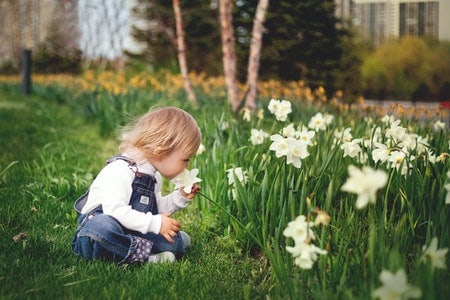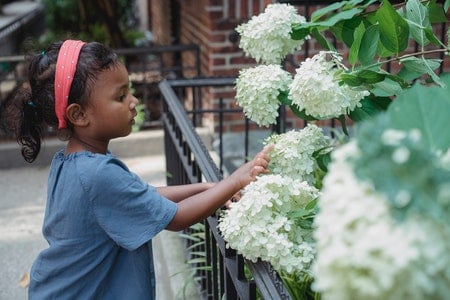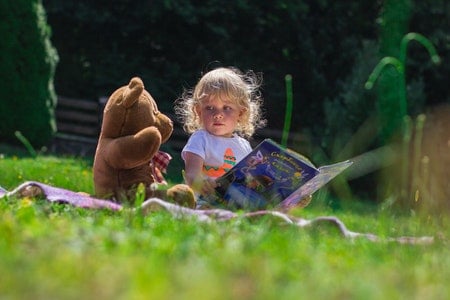A question that has spanned many generations.
Teaching your kid to plant, especially at a young age, is one of the best things you could do for them. There’s so much to explore, so much joy to be got, and so many good morals to learn. You wouldn’t need to explain the simple and magical things about nature to your child because they’d see and feel it themselves.
Garden Coach Janet Kilburn Phillips said it best, “Why try to explain miracles to your children, when you can have them plant a garden?”
A lot of parents of course recognise the many benefits of gardening, hence the above question: How do I teach my child to plant?
So, here 5 simple ways to do so:
1. Start Small
You don’t want to overwhelm your child with too many plants or rules about gardening. It will kill their interest. Start small. You can do this by having them plant tomatoes in a small pot, instead of directly in a garden. Achieving something like that will make them eager to do more.
- Help your kids feel like a real explorer with this adventure set which includes a safari vest, safari hat, binoculars, magnifying glass, flashlight, whistle, bug collector, bug Tongs, butterfly net
- Made from durable fabric to protect from the elements. Four pockets on the vest and adjustable neck string on the hat. Its a must need for your little genuine adventurer to protect from sun and harm from nature.
Also, doing this will help your child learn the basics of gardening. Like how sunlight works on plants and what plants need to grow.
Another way to start small is by starting with quick growing plants like sunflowers, squash, sweet peas and lettuces. While it’s important that your kids choose the plants they want to grow, you can stir them towards plants that will grow quickly.
The point of this is to capture their interest and once you’ve done this, you can introduce plants that take longer to grow. Remember, don’t overwhelm your child, and don’t be in a hurry to turn them into ‘experts‘. The key to successful gardening is patience.
2. Use the Right Tools
If you are teaching your kids how to plant at an early age, then you need to get tools specially made for kids. Yours will be too bulky and could hurt them.

Get your kid child-sized shovels, buckets, watering cans, pots and gloves, and to make it more exciting, you can get it in their favourite colours. Of course, the colour of the tools does nothing for the plant, but it will add to a fun gardening experience for your child.
You can also show them how to clean and put away the tools when they are done. Make this as fun as possible by allowing a lot of splashing. Kids love water and will do most things that involve playing with it, even if it’s a chore.
By getting your child the right tools for gardening, you are showing them you take gardening seriously and they should too.
3. Show Your Kid How to Compost
Your child’s leftover breakfast doesn’t have to go to waste, you can teach them how it can be food for their garden. Having your kid see scraps and trash turn into fertiliser for the soil can be fun and eye opening. To make this fun and easy, you can provide your child with a small container for composting.
After you do this, help your kid identify what can be composted and what can’t be. Kids will be kids and if you let them, they will dump anything into the compost container. Besides making good fertiliser for your garden, there are other benefits of composting.
It helps you save money by making your own nutrient for your soul and, it’s great for the environment. You help to reduce the trash sent to landmines.
4. Use Technology
Finally, you can turn your kid’s obsession with their smartphone into something good. There are many apps for gardening and, you can have your child download one. There are some apps that cover the entire life cycle of a plant; from planting to harvesting.

This will pique their interest, and having them track their progress will keep them committed.
Depending on the age of the child, or as they get older, you can have them research cool things about gardening and apply them to their garden. Phones are distracting devices, but this way you can channel your kid’s screen time into something worthwhile.
5. Take them to a Farm or the Farm’s Market
To encourage your child’s progress and show them the full extent of gardening and its physical rewards, take them to a farm or the farmer’s market.
A lot of kids don’t know where food comes from or what goes into making it. However, having a garden and visiting a farm will give your child a better understanding of the food they eat and where it comes from. They will see their little garden as part of the process, and it will encourage them to do more.

Another thing is, taking your kids to a farm or having them plant their own garden helps them have a better appreciation for food. Kids are naturally wasteful. But when they see the effort it takes to grow one little tomato or lettuce, they become less wasteful.
6. Stay Consistent
It’d be awful to get your child interested in gardening and not help them see it through. Consistency is key in gardening. However, it’s hard to be consistent during winter. Your kid might find it too cold. You can solve this by bringing the garden indoors. The advantage to this is your kid will learn to grow plants in an indoor environment.
Another advantage to this is you can keep the plants safe from insects and pets. Not all plants can survive in the winter, but you can help them thrive if you grow them indoors. You can show your kid how to give the plants an extended growing season by starting off plants that can’t grow in the winter indoors and then bringing them out when the weather gets warmer.
Lastly, remember to keep it fun and creative. You and your kid can create a design for the garden or make a scarecrow to scare off the insects. Or use your kids’ arts and crafts to decorate the garden.





